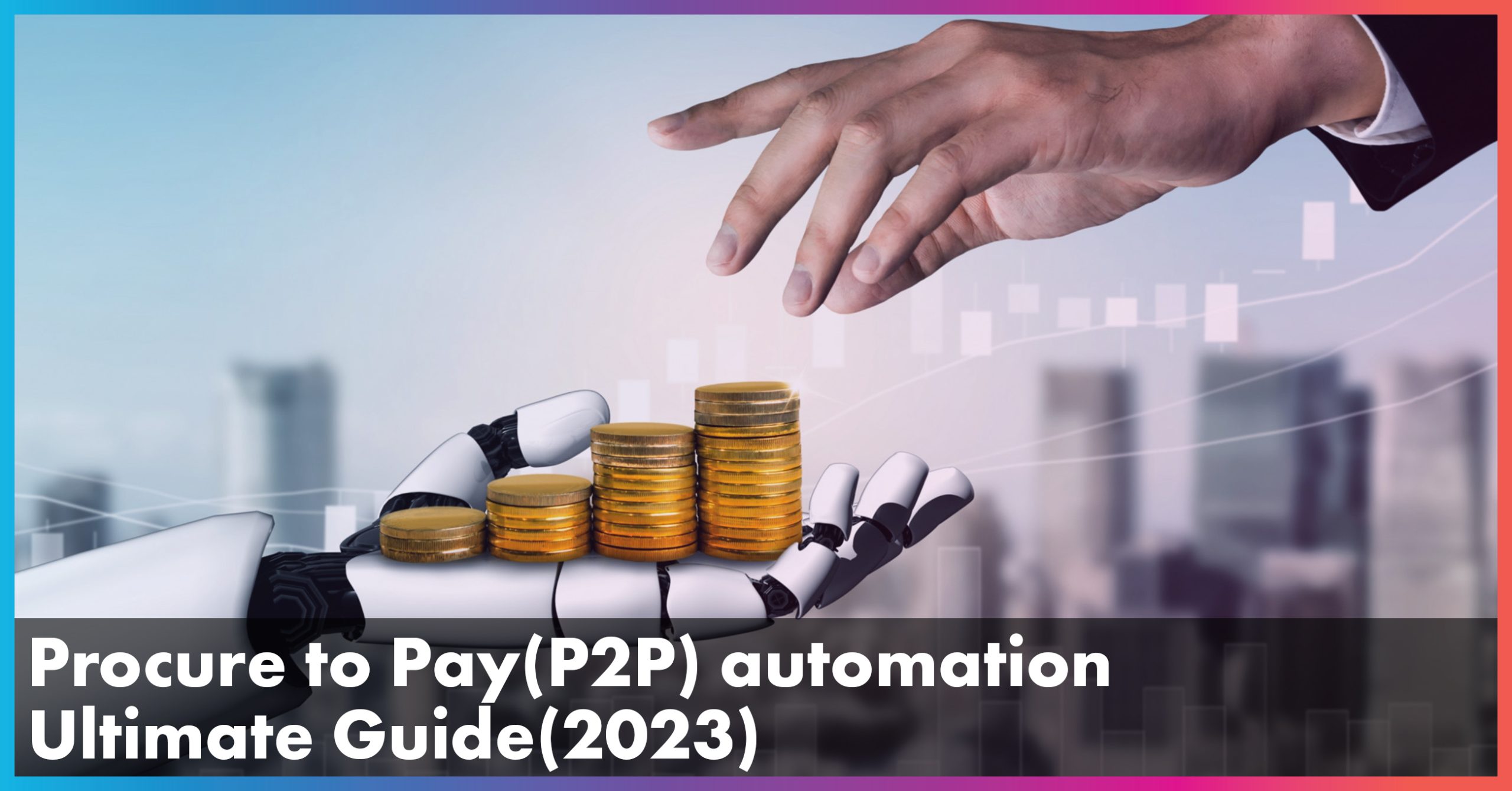The Ultimate Guide to Procure to Pay(P2P) Automation in 2023
Posted On: Jun 27, 2023
Procurement automation tools have become increasingly popular in the modern business landscape as companies are trying out different ways to increase efficiency and consolidate processes. With advancements in technology, automation has proven to be a transformative power that has revolutionized the procure-to-pay processes. This blog dives deep into the field of Procure to Pay(P2P) automation, highlighting the core principles, and advantages of procurement automation tools, exemplifying the effective implementation strategies, and it also provides great insights about the best practices to ensure successful adoption.
How exactly does Procure to Pay(P2P) automation work?
Let us first understand how procurement automation tools work. Procurement automation tools are designed in a way to streamline the entire procurement and payment processes. It includes many stages. such as requisitioning, sourcing, purchasing, invoicing, processing payments, etc. with a target of increased accuracy, faster processing time, cost savings, transparency in processes, and better vendor relationships. With top procurement software, organizations can monitor their spending, and optimize processes, reducing most of the manual errors and gaining greater control over procurement and payment flows. With procurement automation tools, organizations can improve their productivity which would allow them to focus on strategic decision making which will drive their long-term growth.
What are the benefits of automating Procure to Pay(P2P)?
Top procurement software would offer a host of fascinating advantages to organizations. Firstly, it eliminates the need for manual or paper-based processes, reducing mistakes and eliminating the risks of any kind of fraud. Secondly, the real-time data and analytics provide a fair understanding of performance, providing visibility into spend patterns, and vendor performances, which would in turn help organizations make informed, data-driven decisions. Additionally, procurement automation tools empower companies to have seamless integration capabilities, facilitating stronger and more collaborative relationships with vendors through streamlined communication and enhanced transparency. Lastly, by utilizing the power of data, organizations can improve their procurement strategies, get valuable insights from the analytics and negotiate better terms with vendors.

How should organizations Implement Procure to Pay(P2P) automation?
To discover top procurement software, organizations should conduct a comprehensive evaluation of their current processes to understand what areas would require automation. The best procurement software would possess all essential features, including good integration capabilities, scalability, user-friendliness of its interface and compatibility with existing systems. Once the top procurement software is identified, it is important to conduct, meticulous testing, comprehensive training, and an efficient change management system for the smooth transition from manual processes to automated systems. By following these steps properly organizations can get better cost savings and achieve enhanced outcomes empowering the organizations toward greater efficiency and success.
What are the best practices for Procure to Pay(P2P) automation?
To fully optimize the benefits of procurement automation tools, organizations must choose the best procurement software that fits their requirements. Establishing a standardized set of procurement processes that match the industry's best practices is a must. Also, aligning all the employees about these processes is equally important. This ensures consistency, reduces errors, and sets a good foundation for an effective system. This can be achieved by fostering collaboration among different departments, such as procurement, IT, finance etc., promoting a unified approach that paves the way for successful implementation. Prioritizing data integrity is one of the important steps when it comes to the successful implementation of procurement automation tools. Organizations must establish robust data governance policies, ensuring data accuracy by conducting regular hygiene checks and updates of vendor databases. Finally, continuous monitoring and updating of processes play a crucial role. Making the best use of analytics to identify bottlenecks, monitor key performance indicators (KPIs), and adopt necessary adjustments is the key to enhancing the overall efficiency of procurement automation tools. By adopting these best practices, companies can maximize the benefits derived from procure-to-pay (P2P) automation, streamline operations and achieve greater success in their procurement and Payment processes.
What is the future of Procure to Pay(P2P) automation?
In today’s fast-paced business landscape. Procure-to-Pay (P2P) automation presents organizations with substantial advantages to get the maximum benefits from their procurement and payment processes. Adopting procurement automation tools empowers businesses to streamline their operations, improve transparency in the system, maximize cost savings, enhance communication, and develop stronger relationships between different stakeholders involved. But following all these still does not guarantee complete success. For a successful implementation of procurement automation tools, organizations must conduct meticulous planning, thoughtful software selection, and adhere to best industry practices. With the right approach and processes, Procure to Pay(P2P) automation can transform an organization providing increased efficiency, strategic agility, and improved accuracy. By embracing automation, organizations can stay competitive and adapt well to the ever-changing business world. By choosing a top procurement software, organizations will be empowered to achieve greater success and sustained growth. Furthermore, companies looking to enhance their vendor management system should consider the advantages offered by Partner Portal, one of the leading vendor management system companies, which helps organizations streamline and centralize all their vendor-related activities, providing them with a robust platform to manage vendors, track performance and facilitate seamless communication.
